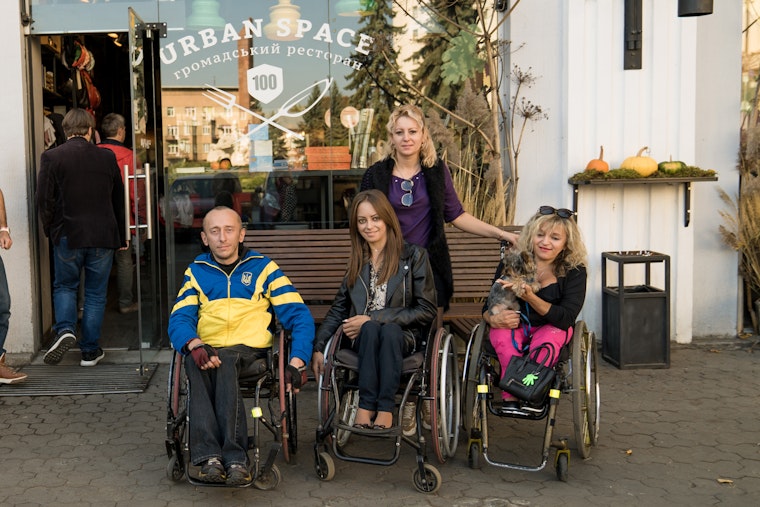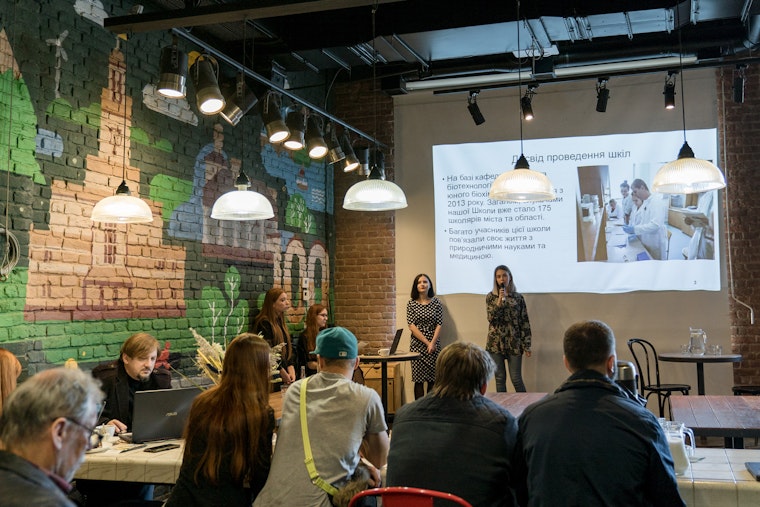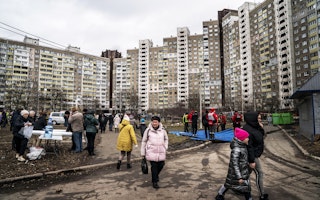Charting Ukraine’s Future
By Oleksandr Sushko

It has been five months since Russia began its all-out invasion of Ukraine. The bombardment has been relentless. The Russian forces make no pretense of aiming at military targets, raining down missiles on civilians far from the battle’s front lines. Hospitals, homes, schools, churches, and cathedrals of culture have been senselessly destroyed, claiming thousands of lives, including women and children, as Moscow piles war crime on war crime in its drive to erase a proud sovereign nation from the map.
Ukrainian soldiers continue to fight bravely, determined to prevail. And Ukrainian civil society leaders are busy planning for the future—working to strengthen state institutions and map out the rebuilding the country once the hostilities have ended. In early July, leaders of allied nations met in Lugano, Switzerland, to condemn Russia’s aggression and to affirm their commitment to Ukraine’s territorial integrity; 42 nations pledged to support the country on its road to recovery.
Civil society groups produced a manifesto of their own, affirming the vital importance of having their number intricately involved in efforts to rebuild Ukraine’s infrastructure and institutions, and contribute to sustainable reforms; not just as watchdogs, but as true partners throughout the process. We at the International Renaissance Foundation were pleased to participate from the start in the discussions that led to the manifesto, and were proud to sign on. The manifesto reflects its signatories’ belief that the reconstruction of Ukraine is about far more than merely replacing bombed-out buildings and reopening roads. It is a commitment to holding the recovery to high standards—of diversity, inclusion, transparency, accountability, energy efficiency, and energy security—and to helping develop and socialize the tools to ensure these standards are met.
The International Renaissance Foundation, the Ukrainian philanthropy that is my privilege to lead, was pleased to be involved from the earliest stages in the discussions that led to the civil society manifesto. And we were honored to join more than 100 signatories to this blueprint so vital to Ukraine’s future.


During the conference, some asked: Why even bother talking about rebuilding when the bombs are still falling? There are several answers. Some aspects of the recovery are urgently needed right away. We need to expand transport corridors, for example, so that essential goods can reliably and safely be brought into the country. But it is also important to begin developing plans for reconstruction as soon as possible, so that they can be implemented immediately after the war ends. And we need to show our allies, philanthropic donors, and potential business investors what a post-conflict Ukraine will look like, to keep them engaged and involved even as other global crises beckon.
I have great hope for what civil society can accomplish because I have seen what its members are capable of. One of our partners runs the Teple Misto project in Ivano-Frankivs, in western Ukraine. They exemplify the kind of change that drives those working today to rebuild Ukraine tomorrow. Well before the war began in earnest, Teple Misto helped foster and build cross-cutting efforts by NGOs, small- and medium-sized businesses, activists, local officials, and others to create a warm and welcoming community responsive to its citizens’ needs.
Their ability to rally stakeholders from all different sectors helped make their work in Ivano-Frankivs a success, as it has become one of the most comfortable and attractive cities in Ukraine. One of their most notable projects, Promprylad Renovation, is an innovation center that has helped revitalize an old industrial factory. They brought people together to help work on new approaches to economic development in the region, to spur urban planning, and to foster investment in contemporary art and education.
These efforts suggest a template for the nationwide rebuilding efforts to come. Once the bombing began, Teple Misto helped provide a platform for those forced to flee the war to stay in touch, develop civic initiatives, and even find shelter. I look forward to checking in on their progress, and learning the lessons of their work, in the coming days.
The challenges before us have grown immeasurably since the Russian aggression began in earnest. The conflict has claimed lives, ruined farmland, and destroyed vital infrastructure that will take years to restore. Thousands have fled the front lines, seeking refuge in western Ukraine or crossing the border in hopes of finding peace in other lands. Still others have been kidnapped, and forced by the Russians into re-education camps. The impact on Ukrainian society is hard to measure. But Ukraine’s heart is strong. Its people remain resolved. And its civil society sector is united by a common desire—to rebuild Ukraine in a strong and sustainable fashion, no matter the odds.
More from Open Society on Ukraine:
Oleksandr Sushko is executive director of the International Renaissance Foundation in Ukraine.


